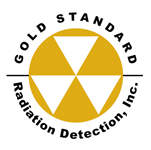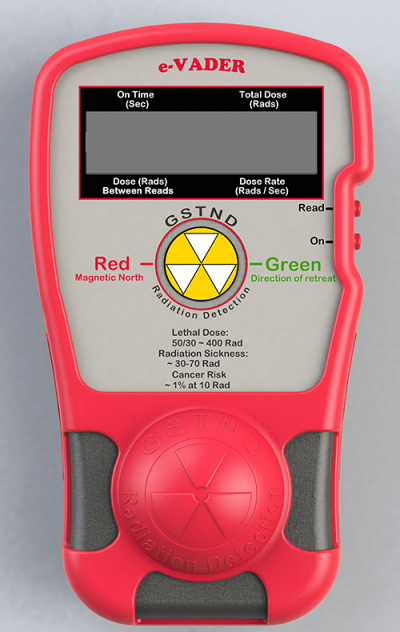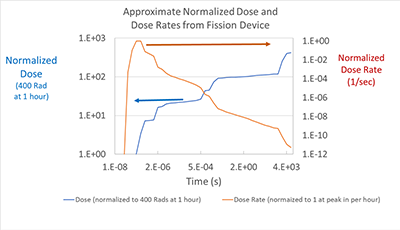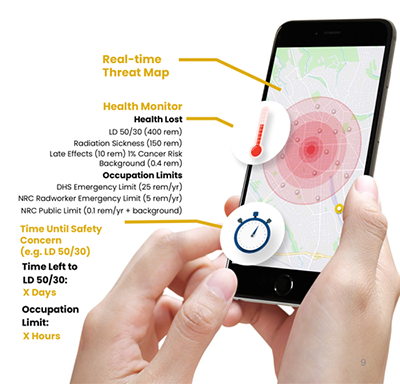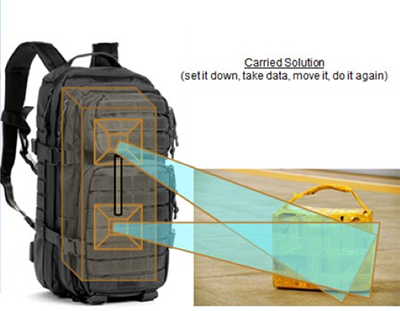Why these Technologies?
1) How will the eVader technology and the eVader network save my life or the lives of my family members? The titles each offer a key aspect of how the eVader offers value.
Information
The goal of our handheld and network solutions (under development) are to provide information under any conditions where people may survive. We intend this solution to immediately tell you how much trouble you or your family are in and provide information to assist in maintaining your health and improve survival.
It is obvious for the handheld unit, if you have one you get real-time information regarding the threat, health lost and the rate health is being lost due to radiation.
For the whole population, this will be done by creating a network independent of our cell phones which communicates between its own nodes and potential cells phones but broadcasts independently. The characteristics of the network are it is not connected to utilities and is designed to be robust to disruption and is inherently distributed. The distributed part means that a failure of one node leaves the rest of the network still functional.
Because we are designing the network to survive the worst threats possible then it will be likely to be there when you need it. We have and are developing technologies to enable the network to function under worst anticipated conditions.
Our intended development progression starts with the handheld unit, to a networked handheld unit with a module that can be connected to your phone, providing real-time threat information. With this information you may have a path to get to your family, to knowledge of how to leave or evade the vicinity of a threat, or how to provide emergency services in a safer, quicker manner than without these tools.
Another unique feature of the network is in the eVader monitoring for threats. Monitoring the dose to civilians, first responders and military personnel during a radiological or other disaster.
‘generic threats’
These are many reasons that our cell networks, internet and utilities may fail. We saw this in the Texas ice storm, hurricane Katrina, solar flares (1989 in Canada and US East Coast, or the Carrington event, 1859), the Japan tidal wave. In addition, there is a much more common EMP type of event on the horizon – that of handheld terrorist or State actor devices. For example, do a search on EMP weapons or ‘do-it-yourself’ EMP devise. Some of the website have more than a million hits!
Having a source of reliable information and communication is key to improving our response to these awful situations. Of course, if we are relying on a disaster communication system it needs to survive the worst of the envisioned threats and the hardest to protect against. These are the reasons we need to include radiation hardening and EMP hardening in the solutions.
Radiation
Radiation has no color or smell. It can give us delayed health effects, or a lethal dose accompanied by a horrible death. This can happen while you can have no immediate knowledge that you were exposed. Exposure can be due to a Radiation Dispersal Device (RDD), an accident like Chernobyl, or a nuclear detonation and there may be a moving cloud of radiation. Perhaps everyone is panicking – how do we know what to do? Services we depend on such as police, fire and military, are overwhelmed. So how do we act to protect our loved ones?
To top it off, many individuals and institutions who have bought radiation detection equipment do not know that their devices will either be reading the wrong values (meaning you will make bad decisions because they mislead you) or not functional during and after an event.
A look the historic plot from Glasstone and Dolan, 1977 edition, Fig. 8.14 on page 328, provides some insight into dose rate effects. The figure has two traces. These are the gamma energy output rate per kiloton versus time for a hypothetical fission explosion and for a high-altitude blast. For copyright reasons we cannot reproduce that plot. Losing the top of a reactor, such as Chernobyls accident, is similar in many ways. They show that the initial or prompt burst of radiation is roughly 11-orders of magnitude greater than the rate at 1 hour. That is a huge difference. It is key to what we are bringing attention to – which is that existing radiation detectors may be useless in these conditions.
Let us explain:
Prompt radiation is anything from fractions of a second to an hour after an event. For this discussion consider anything less than 15 minutes as prompt, for the simple reason that it is roughly how long we think it might take to sense a problem, pull out a device, check the results and act. That kind of environment would also likely be high EMP, cause radiation damaged electronics and be GPS denied.
In addition to the EMP pulse, the radiation itself can cause your phone or other display to fail.[1],[2] In addition, when powered, electronic chips can fail at dose rates as low as 3×1010 rad/s. The electronics can fail permanently at those dose rates or worse fail to operate properly. Electronics that are off during irradiation are much more robust. We and our partners are and are improving circuits to survive these conditions.[3]
Processors can also fail by giving wrong answers to calculations at doses as low as 10 mrad (for example, a transcontinental flight). A.H. Johnston[4] published results showing circuit failure at doses as low as 1 rad/s as well (see Fig.7 of that paper). This information highlights that components, processors and complete circuits operate differently. This is the reason airplanes employ multiple processors doing consensus calculations. This means running the same code on multiple processors, and when one starts deviating inflight it is shut down and restarted. Even at relatively low dose rates most commercial processors will need to be reset every few hours if exposed to even 10 mrad/hr due to single event upsets.[5]
If a soldier were unfortunately in a zone obtaining 400 rad in 15 minutes (Lethal dose 50/30) then the peak dose rate would have been approximately 4×1011 rads/s. Most electronics will likely fail permanently if operational and fully powered.
This is one of the problems technologies like GammaPix from Image Insight will have to deal with once they start doing intense radiation calibrations – this means the dynamic range can be small, limited at low doses by camera sensitivity and at higher values by processor performance.
A radiation workers yearly occupational limit, is 100 mrem/yr. If you get that much in an hour from a fission device, then the peak dose rate would be about 1×1010 rads/hour or 3 x106 rads/second. This would not destroy most electronics, but most processors would need a reset. This is a key amount of dose because it would register in the RDA app for occupational exposure. With this dose it is likely that the average cell phone would have a high likelihood of not working properly without a reboot.
This late time acquired dose rate over a long time is the likely cause of most of the long-term deaths from the Chernobyl accident. If the phone gets rebooted before an accurate reading, then the data is lost. This discussion gets to the value of a EMP and Radiation hardened network and sensor solution.
Why will existing systems be likely to fail?
All commercial radiation sensors, that we have found, quote an average dose rate at which they will work. This is typically 500 Rem/hour; which is approximately the lethal dose 50/30 (50% of people will die in 30 days). Usually, the quoted rate limit is over an hour time frame at an average dose rate one might survive – in an hour. However, the dose rate is high at first and then can fall rapidly. We apologize for the complicated figure but the physics here is key to understanding our technology and why we believe everything else will not help you in the instance of this kind of nuclear event. Notice the peak in the orange trace – it covers a very short period of time, less than 1 millisecond), in that time some key things happen. Your electronics will fail to work properly. You may survive but your phone may not work, your computer may go down, medical equipment will fail, and you will have a biologically significant amount of dose and you may not know it. Your existing detector will have saturated and may not be working too. On the other hand, you may well survive and the radiation exposure you received will be unknown – with almost any instrument on the market.
That average hour will not reflect the damage to your tissue. Using an instrument like that you could be missing the most critical information which might save your life by using one of these devices. In a book by Glasstone,’; Effects of Nuclear weapons’, he makes the point on page 577, he says ‘Such injuries as were caused by nuclear radiation were due to initial radiation’. What this means is that the prompt radiation caused most of the radiation induced deaths – not the fallout. Until now, there was nothing that could be done about this.
Another important point is that radiation damage may not be the cause of most casualties. Fire and blast may dominate the threat and in that case you want your information network to be operating. However, if you are unfortunate enough to be in the wrong place at the wrong time, there is an excellent chance the information eVader I can provide will save your live and reduce longterm effects. The technology should continue to function under other extremes helping to keep you safe then as well.
The bottom line is that most sensors will fail and if they don’t then the electronics may fail. It is the reason we don’t own Geiger counters or other radiation sensors – because if we really need them, they will fail, take too long to give information or they will provide wrong information leading us to make bad decisions. Our sensors fix those issues. We offer more detail in the education section.
Our handheld eVader, without networking, will help those who have them, it also can tell you which way to run or shield. The eVader network product will help address the communication problem in event of any large disaster. We are working to make the aspects of this capability available through a subscription service and a mesh network. We are bending our efforts towards a ‘self-aggregating’ radiation- and EMP- hardening communications network. The network we envision, and we believe that we can build, would be operational after an explosion, such as that in Beirut – non nuclear, during a power outage (such as the one in the Northeast US in 1965) and outside the direct blast zone of a nuclear explosion. In such situations first responders, military personnel and police are overwhelmed. Our hero’s want to help but may be overwhelmed and we need to have information to help ourselves and help them do the best they can. Everyone could have access to a real-time map of key hazards. We are actively pursuing ways to fund this effort.
The issue of EMP threats is growing larger everyday. Please do a search on EMP weapons, and handheld do-it-yourself EMP devices. What you will find is that there are many videos, some have over 1 million hits. These EMP devices are becoming ever more abundant and, in an era, where we are highly dependent upon electronics it is important to have a hardened means of communication.
What has happened and what to do? Are the first questions one asks in a disaster; we intend to provide that information.
There is currently no provision to monitor real-time radiation exposure to the general population, or to individual family groups, from a nuclear accident or war. This was seen most recently at Fukushima. Civilians had no clue what was happening and information from the government was frequently wrong or not up to date. In Beirut for example where there was an explosion with a sizable mushroom cloud there was no good way, on the ground and nearby, to tell if it was a nuclear explosion, radioactive dispersal device (RDD) or not. The US also has no reasonable program, since it has practically abandoned the concept of Civil Defense, to protect its citizens and provide guidance in these circumstances. The eVader radiation measurement capability can fill that role.
Electromagnetic Pulse (EMP)
What most people are unaware of is that there are EMP weapons available for purchase. There are do-it-yourself websites telling us to build them and some of these sites have more than a million reads. These weapons are becoming ubiquitous with little information regarding the threats they pose to the electronics most of us depend on. In addition, there is an EMP (ElectroMagnetic Pulse) created in explosions like the one in Beirut, and most of all EMPs can be generated from solar events as well a nuclear bomb. This means your computer, the internet, cell phones, and other means of electronic communication may not work.
You need a device that won’t saturate, that will work through moderate EMP, doesn’t require additional power, can be operated by an average person and doesn’t require a Ph.D to interpret. It will help you navigate through a spreading radiation field by itself. That is the device we developed.
Providing Needed Information in a Disaster
This network needs to be able to be operate after an event. This should happen whether there is an EMP burst without ionizing radiation or with it. History has shown there may be many disasters and hopefully nuclear explosions will always be rare. We want the devices and the network to be function under as many circumstances as possible
We illustrate the envisioned software solution in Figure 3. Fig. 3 shows a handheld device with a graphic illustrating an at a-glance comparison of the current dose, the health effect of that dose with respect to occupation requirements on the top of the display. In the middle is a graphical and numerical display of the time until the next occupation al limit and health marker. On the bottom is a local area map with a listing of health parameters or dose or dose rate (users’ choice) superimposed. The color shaded regions illustrate how a fallout pattern may be reflected in the impromptu measured radiation map.
We would love to say that this technology will reduce the number of lives lost by xx% and the cost consequences by xx%. That analysis cannot exist. The closest we have come is from Garwin
[vi], ‘suggests 60,000 people would be dead from prompt effects and 1 million people could be evacuated’. Enav[vii],and others not referenced point to potentially 20x [from 1M/60,000] reduction in deaths. This large potential reduction in deaths is a key part of the opportunity represented with the eVader technology.
Remember when we were told to bend over, put our heads between our knees, and kiss our bottoms goodbye? We now can do much more to help people survive and help the DoD protect its personnel with this technology than with what was available 50 years ago. We believe that our technology can help make this dream of available information a reality.
2) How will the FindSNM/FindWMD technology save the lives of my family members, myself, our civilization?
Our second product can dramatically improve our ability to find shielded explosives, nuclear materials or other contraband. The statement about saving our civilization is not in jest or an exaggeration.
Remembering the horror after 9/11 when the Twin towers went down? The consequences in addition to the more than 3000 immediate deaths, were wars and trillions of dollar spent in recovery. In addition, those repercussions continue. What may happen if a nuclear blast removes New York? Los Angeles or anywhere else and hundreds of thousand to millions of people are gone? We really need to do what we can to stop the transport of weapons of mass destruction (WMDs) of any type. Society is fragile.
Global proliferation of nuclear materials and weapons components have made it possible for enemy actors and terrorists to obtain nuclear weapons. FindSNM will be a single-point pulse powered detection device for detecting nuclear materials and other weapons of mass destruction safely and quickly.
Our Goal is to modify the portable prototype, described in 2019 . M. Derzon, N. Price, A. Powledge, L. Gutierrez, M. Koskelo, W. Myers, C. Moss, M. James, K. Hoyt, C. Brooks, J. Perez, and P. Galambos, SAND2019-7553 , Presented at 2019 INMM Conference, July 2019 ‘Short Pulse Active Interrogation System for Finding Fissile Materials’ making it lighter (35-50 lbs.) and more portable (backpack or vehicle-mounted), while creating an optimized neutron generator to increase detection sensitivity and expand the range of chemical compounds it can detect. Other Configurations are feasible, see slide. We plan to mature the technology in order to provide 100% testing of all airport baggage and transportainers during loading and unloading while searching for nuclear and other weapon of mass destruction materials.
We have proven the physics and technology and will create a portable unit for plutonium and uranium, eventually expanding into chemical, biological, radiological, nuclear, and explosives (CBRNe). FindSNM uses a low-radiation active detection method to detect small amounts of shielded Uranium and Plutonium in milliseconds with no setup time. The system is faster, smaller, more sensitive, and safer than any other detection system. The system features well-developed pulsed power designs as well as proven commercial-off-the-shelf (COTs) electronics and data acquisition to display levels of threat in a simple, easy to read stoplight design (green=good, red=bad).
Unlike typical x-ray machines that require two points of contact, our system can scan from a single position, meaning that the target doesn’t need to be between two separate devices. One device will do, improving the usability.
Commercial and Gov’t/Military needs: As security concerns mount globally, the demand for products that speed up security checkpoints, while increasing detection accuracy is growing.
These technologies will save lives by improving the speed, sensitivity and reducing the cost of finding contraband and weapons of mass destruction.
[1] T.F. Wrobel, J.L. Azarewicz ,”High Dose Rate Burnout in Silicon Epi. Trans.”, IEEE Nuc. Sci., NS-27, 1980.
[2] Ohring, M., ‘Reliability and Failure of Electronic Materials and Devices’, Academic Press, 1998.
[3] SCR Circuit Patent Application Number, 67/734,238, 9/20/2018
[4] A.H. Johnston, IEEE Trans, on Nucl. Sci., Vol. NS-31, No.6, p.1427, 1984
[5] https://www.futurity.org/cosmic-rays-seu-electronics-1361892-2/, accessed 6/23/2020, orig. reports removed. Also, A.M. Finn, ‘System Effects of Single Event Upsets’,AIAA, 1989 Conf. Mont. CA, Oct 3-5, 1989.
[vi] Garwin R.L. 2010. Nuclear Terrorism: A Global Threat. Presentation at the Harvard-Tsinghua Workshop on Nuclear Policies, Beijing, China, March 16, 2010. Available online at http://bit.ly/bOPCma, The Bridge, https://www.nae.edu/File.aspx?id=20575, suggests 60,000 people would be dead from prompt effects and 1 million people could be evacuated. Original source 2006 RAND paper for DHS.
[vii] Einav, S., et al, Evacuation Priorities in mass casualty terror-related events, Ann Surg, 239(3), 304-310. Evans, et al, ‘Health Effects Model for Nuclear Power Plant Accident Consequence Analysis’, 1993.
